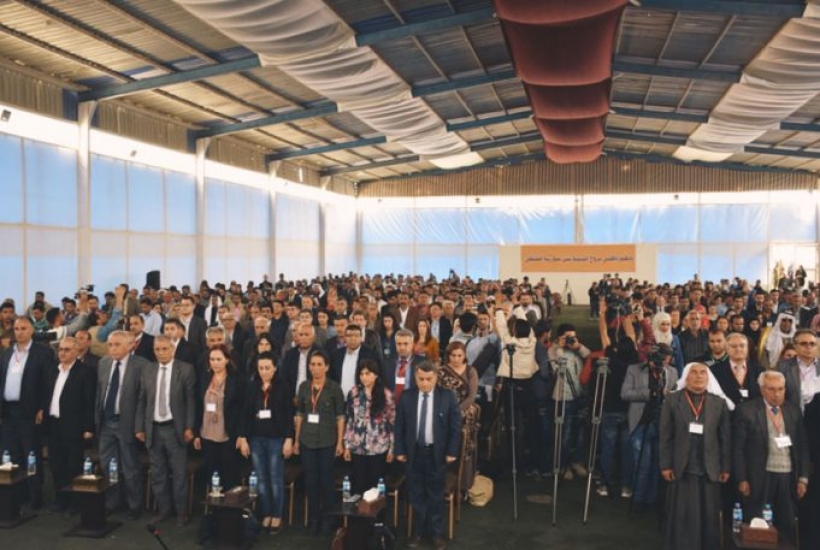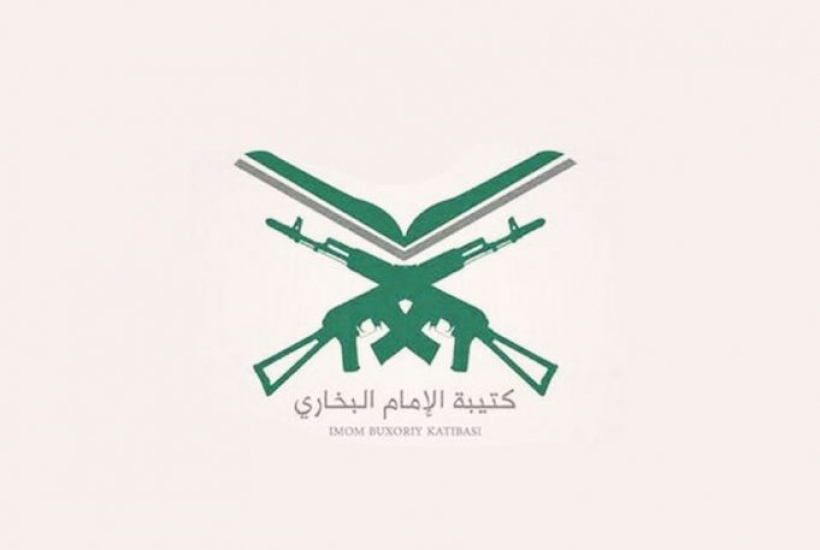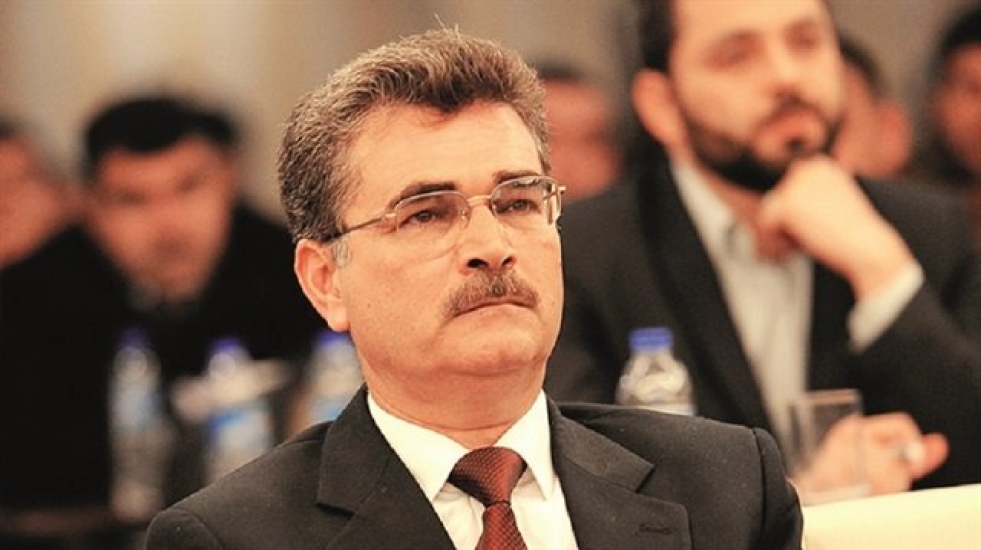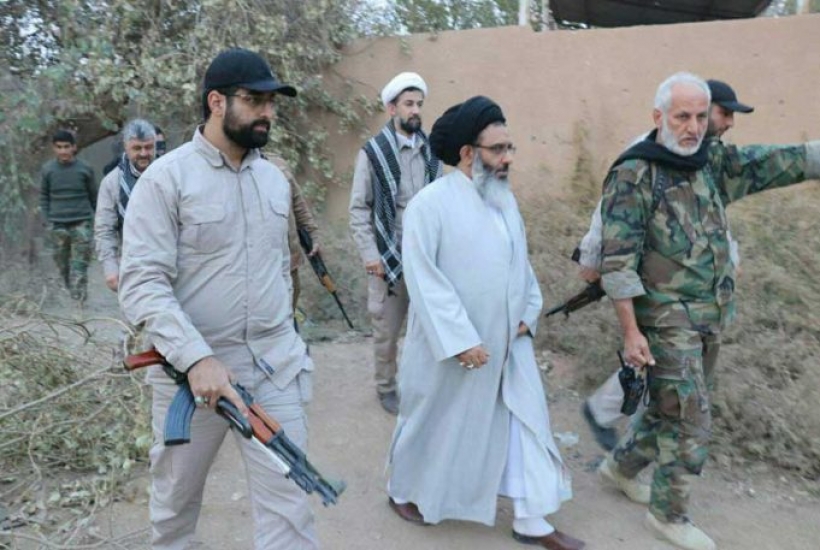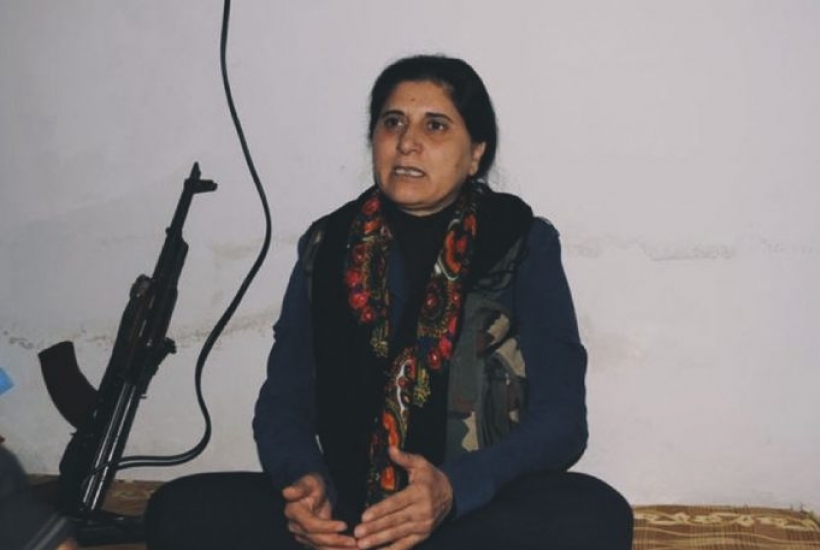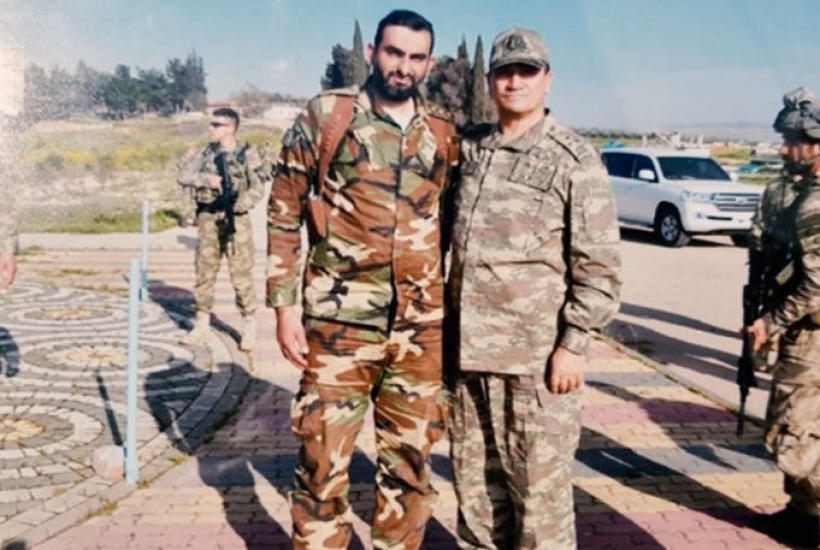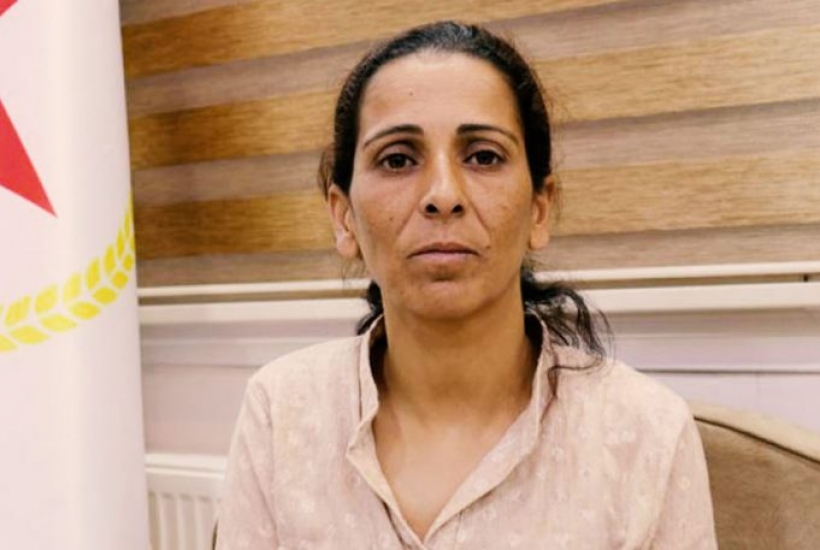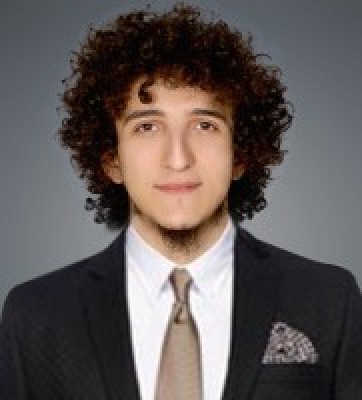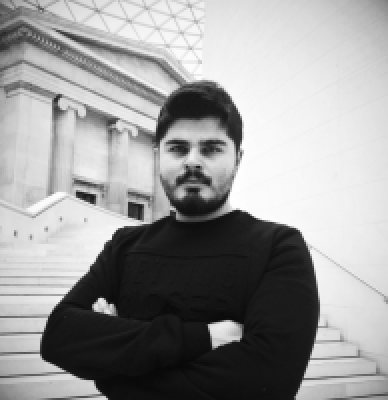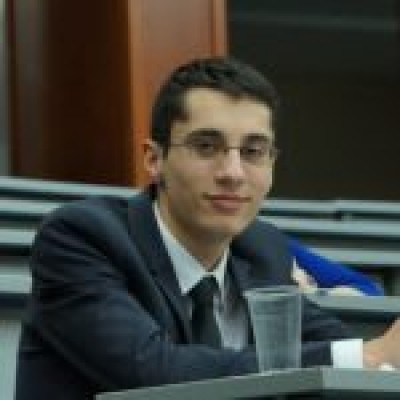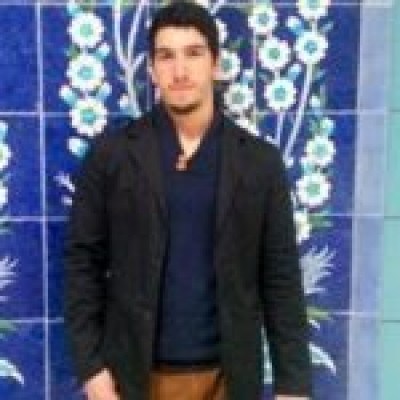Who is Who?
Future Syria Party
Future Syria Party
The Future Syria Party’s formation was announced after the congress held in Raqqa’s stadium on the 27th of March 2018.
Before the formation of the Future Syria Party, US’ State Department, intelligence and military officials held meetings with the YPG/PYD and the formation of this party was decided during these meetings.
The head of the Future Syria Party is Ibrahim Kaftan, who was a member of the Baath Party in Manbij before the war and the head of the local council in Manbij after its capture by the YPG/PYD.
The general secretary of the party is Hefrin Halaf, who joined the YPG/PYD in 2016 and is the head of the PYD’s Jazira Canton’s Economy Commission.
The executive committee of the party consists of 81 members in total, who are representatives from the regions of Idlib, Aleppo and Afrin, which is not under the control of the PYD/YPG, and the regions of Deir ez Zor, Raqqa, Ayn al-Arab (Kobane), Tal Abyad, Manbij and Shahba, which are either fully or partly under the control of the PYD/YPG.
The logo of the Future Syria Party, the absence of the PKK’s and its leader Abdullah Öcalan’s symbols during the congress and the absence of co-chairmanship are striking.
One thing that drew attention was the use of the slogans “multicolored and decentralized” on the banners during the congress. These slogans signal that the PYD/YPG is open for negotiation with the regime and has abandoned their demand for a federation.
The spokesperson for the US State Department Nauert gave positive reactions to the new formation that is the Future Syria Party whereas Turkey’s Prime Minister Binali Yıldırım said: “We know them well, they may come in all sorts of forms and names, and they may fool some of our friends temporarily, but they cannot fool the Republic of Turkey and its glorious people”.
The Imam Buhari Group
The Imam Buhari Group
The Imam Buhari Group consists mainly of ethnic Uzbek fighters. Their main headquarters is in Afghanistan. While Uzbek fighters have been coming to Syria since 2012, the group only started to become a problem in late 2014.
The Imam Buhari Group’s affiliates in Syria and Afghanistan have sworn loyalty to the Afghanistan Islamic Emirate (Taliban). The group also names itself in its latest media publications the “Afghanistan Islamic Emirate – The Imam Buhari Group”.
Salahuddin Al Uzbeki, who has fought in Afghanistan for years and has serious war experience has led the group for a long time. On the 28th of April 2017, together with 4 of his friends, he was assassinated and lost his life.
After Salahuddin Al Uzbeki’s assassination, Abu Yusuf Al Muhacir started to lead the group.
While the Imam Buhari Group joins a lot of operations led by the rebels in Syria, it is presumed that their main headquarters and area of operation is in Latakia/Turkmen Mountain.
The latest operation that they joined was in Kernaz, where the rebels started an offensive in retaliation to the regime’s military operation against the opposition-held Eastern Ghouta. It is believed that their fighters number between 400 and 600.
The group has published a statement, claiming that the real enemy is the Assad regime and that the focus should thus be on the regime, after the clashes between Hayat Tahrir al Sham and Jabhat Tahrir Suriyah started.
The Imam Buhari Group has been listed as a terrorist organization by the US on the 22th of March 2018. In the explanation, the group’s ties to Al Qaeda/Nusra have drawn attention while the group’s presence in Afghanistan is not addressed.
Against the association with Al Qaeda/Nusra, the Imam Buhari Group has stated that it continuously cooperates with Ahrar al Sham in Syria. The Imam Buhari Group was attacked by the HTS during the clashes between HTS and Ahrar al Sham.
The Jabhat Tahrir Suriyah group (JTS), which consists of Ahrar al Sham and Noureddin Zinki, has published a statement claiming that the Imam Buhari Group is not affiliated with any terrorist or radical group and that it is an independent organization.
Shervan Dervish
Shervan Dervish
Shervan Dervish is an ethnic Kurd born in Syria in 1976. He is married and the father of 5 children between the ages of 1 and 13.
He has been active among the PYD/YPG ranks since the start of the Syrian war in 2011. Before the war, he is known to have stayed in Qandil for years.
When a US-led military operation, dubbed the Euphrates Volcano, against Daesh began in 2015, he was appointed as the YPG’s spokesman for the operation.
He is a founding member of the Syrian Democratic Forces (SDF) formation, which was founded by the US to conceal the YPG/PKK presence, and was a spokesman for the SDF for a period of time.
After the capture of the city of Manbij from Daesh, he was appointed as the spokesperson for the Manbij Military Council formed in Manbij.
General Jarrard who was welcomed by Shervan Dervish during the visit of US military officials to the city of Manbij in February 2018 said about their partners: “They connect them to the PKK but I have not seen any trace of that so far during our cooperation”.
The New York Times correspondent who wrote about this visit remarked that there was a portrait of the PKK’s founder Abdullah Öcalan on the wall in Shervan Dervish’s room.
Shervan Dervish is known to have substantial ties to Qandil as he often contributes to the PKK’s affiliated media organizations from different locations in Syria.
Local news sources have reported that Shervan Dervish was shot by a sniper while he was entering his vehicle and was taken to the hospital wounded. The PKK/YPG/SDF has not made any official comment on the matter.
Shervan Dervish, together with the YPG commander Cemil Mazlum, was proclaimed to be a target by the Qiyyam Movement which is known for its assassination practices against YPG/PKK figures. The group has however not claimed responsibility yet.
The Ertuğrul Brigade has claimed responsibility for the assassination attempt. The Qiyyam Movement however has published a video allegedly killing Shervan Dervish in his home.
Manbij Military Council’s General Commander: Muhammed Ebu Adil
Muhammed Ebu Adil
Muhammed Ebu Adil was born in 1979 and he is originally from Manbij. Ebu Adil is married and has 7 children all between the ages of 10 and 22.
In an interview he gave to the New York Times he has claimed that he had no prior military experience when the Syrian Revolution began and that he is a businessman.
Before being appointed as the Manbij Military Council’s General Commander, he took part in 13 battles led by the US-led International Coalition.
When Daesh attacked Ayn el Arap (Kobane), he fought with the YPG as the General Commander of the Shams al Shimal Brigade.
While being the General Commander of the Shams al Shimal Brigade, Ebu Adil took part in the operation to capture the Tishreen dam. After the capture of the dam, the Manbij Military Council’s formation was announced.
Ebu Adil took part in the YPG’s capture of Manbij from Daesh as the General Commander of the Shams al Shimal Brigade.
Muhammed Ebu Adil was appointed as the General Commander of the Manbij Military Council after the death of its former commander Adnan Ebu Emjed in Raqqa in August 2017.
In November 2017, Ebu Adil was wounded after the Qiyyam Movement’s attack that targeted YPG/SDF commanders in the city of Manbij.
Ebu Adil spoke to Sputnik on the 19th of April 2018: “We take Turkey’s statements about Manbij seriously and take our precautions accordingly.”
Dr. Muhammed Wajih Juma: President of the Syrian Turkmen Assembly
Dr. Muhammed Wajih Juma: President of the Syrian Turkmen Assembly
Born in 1960 in Aleppo’s district Manbij, Dr. Muhammad Wajih Juma is a member of a Turkmen family of rural Jerabulus. By profession, he is a surgeon/medical doctor.
Dr. Juma served as the chief physician of the Manbij Public Hospital from 1995 to 2003, and from then until 2011 as head of the department of General Surgery at Aleppo’s El Razi Hospital.
Between 2010 and 2012, he served as president of the Aleppo Chamber of Physicians.
Taking on an active role in Syria’s political opposition in the wake of the revolutionary movement, Dr. Muhammad Wajih Juma was appointed to the position of Health Minister of the Syrian Interim Government in 2014, as which he remained until 2016.
Dr. Muhammad Wajih Juma also served as the founding president of the Syrian Turkmen National Movement Party between 2014 and 2017.
During his tenure as advisor to the Prime Minister of the Interim Government in 2017, Dr. Muhammad Wajih Juma was elected president of the Syrian Turkmen Assembly during the Assembly’s 4th Ordinary Congress held in Ankara on February 10th, 2018.
Dr. Juma, who has been conducting a series of deliberations in the liberated regions of operations Olive Branch and Euphrates Shield (Afrin, Jarabulus, A’zaz, Al Bab) in April 2018, is currently taking steps to expedite the Syrian Turkmen Assembly’s activities in the Euphrates Shield Area, a policy which he has been pursuing in both Turkey and Syria.
Ebulfazl Tabatabai Eshkzeri – Velayet-i Fakih’s Syria Representative
Ebulfazl Tabatabai Eshkzeri was born in Iran’s Babolser city in the province of Mazenderan. His theological study began next to Ayatollah Bakuyi in the city of Feridunkar in Mazenderan. He became a revered muslim scholar of the tradition of Kum after he started to study with Ayatollah Mekarim Shirazi and Ayatollah Vahid Horasani after reaching the age of 20 in the city of Kum.
Eshkzeri has been a member of the “Hazreti Veliyyi Asr (Mehdi) Research Center” and the “Horasan Razavi Shia and Sunni Joint Knowledge Delegation”. He has also attended a year of learning Arabic in Syria. Eshkzeri was a Friday prayer imam in the city of Feriman in the province of Horasan Razavi between the years of 2004 and 2016. After meeting the Revolutionary Guide Ayatollah Ali Khamenei in May 2016 in Iran, he was appointed as the Velayeti Fakih’s Syria representative. Iran’s Revolutionary Guide has representation offices in Iraq, Syria and Lebanon. Before Eshkzeri, Mujteba Huseyni was the representative for Iraq and Syria.
Eshkzeri has visited together with immigrant families villages and towns, schools and prayer houses near the city of Homs. These immigrant families hailed from the Shia towns of Fua and Kafraya. Eshkzeri visited these together with delegations from the Hazreti Rukiyye university in Homs and the Nebiyy-Ekrem scholars delegation after settling in Syria. During this visit, a delegation of Kum’s Camiatu’l Mustafa el Alemiye University, including its Syria coordinator was present, they visited the Huseyniyes.
Ebulfazl Tabatabai Eshkzeri also visited Iran-backed militia groups to motivate them in Syria. When Qasım Suleimani was in Abu Kamal in eastern Syria in 2017, he visited the Shia militias on the frontlines and offered them the greetings of Zeynep and Rukiyye. Eshkzeri’s last visit to raise morale was to Iranian militias to the frontlines in northern Hama on the 5th of April 2018.
Eshkzeri led the funeral prayers of some fallen militias near the Zeynep shrine to the south of Damascus. The fallen Afghan fighters of the Fatimiyyun brigade in particular and other Shia militas are often visited by Eshkzeri during the mourning ceremonies where he holds talks with these militias also.
Asya Abdullah
PKK/KCK member and ex co-chair of the PYD Asya Abdullah who has met French president Macron
Her full name is Abdullah Reyhan Muhammed and her codename is Dilan Reyhan Muhammed. She was born in 1971 in Syria’s Derik (Derika Hemko) village near the city of Al Malikiye. The Derik area is known to be one of the first areas where the PKK organized in Syria.
Asya Abdullah has been among the PKK ranks for roughly 25 years now and is a senior permanent member of the Syrian KCK’s upper administrative body.
Asya Abdullah was active in Iraq’s Qandil and Gara areas as a member of the PKK before she left for Syria.
She is a founding member of the PKK’s political branch the PYD in Syria which was founded in 2003.
She was appointed as the co-chair of the PYD together with Salih Muslim on the 16th of June 2012 during the PYD congress in Syria’s Hasakah.
She has quoted and given references to Abdullah Öcalan often during her position as co-chair at press meetings.
As the co-chair of the PYD she has had contact with a lot of foreign officials including the former French president Hollande and the current foreign minister of Russia Lavrov.
She ceded her position as co-chair to Ayshe Hiso during the PYD congress on the 28th of September 2017 and was appointed co-chair of the umbrella organization TEV-DEM which brings together the PKK’s Syrian political organizations.
Asya Abdullah is responsible for the KCK’s Syrian cantons and has met the French president Macron together with a YPG/PYD delegation on the 29th of March 2018.
Ahmed Mücahid Hayyu Uygar
Ahmed Mücahid Hayyu
Ahmed Mücahid Hayyu (Ebu Hafs) was born in Syria’s Aleppo city in 1980. He is married and a father to two children.
After completing his high school education in Aleppo, he got into the Mechanized Units School in 1999 and graduated in 2002 as a lieutenant. He was promoted to the rank of captain in 2009.
After being promoted to the rank of major in March 2012, he defected from the army because of the unfolding developments in the Syrian conflict and joined Ahrar al Sham.
Ahmed Mücahid stayed in the ranks of Ahrar al Sham until the merger with Jabhat Shamiyye. After the Syrian National Army was formed by the opposition, he was appointed the post of General Commander of the 3. Legion.
He took part in Ahrar al Sham’s battle for Aleppo in 2012, and became the General Commander of Ahrar al Sham for the city of Aleppo and its rural hinterland.
Ahmed Mücahid took part as the General Commander of Ahrar al Sham in 2013 in the battles for the city of Hanaser, the Safira road and the city of Raqqa.
In 2015 he was responsible for the battles of Ariha, Harbe and Jisr el Shughour in Idlib province as Ahrar al Sham’s General Commander (Chief of Staff).
In 2016 he was responsible for defending against the attacks on Aleppo and the operation to cut the Azez-Aleppo road by the regime forces. At the same time he took part in the Euphrates Shield Operation as the commander of Ahrar al Sham, the battle for the town of Berata and its surroundings and the Aqil mountain and the city of Al Bab.
In 2018 he took active part in the Olive Branch Operation led by the Turkish Armed Forces (TAF) and its FSA allies as the General Commander of the 3. Legion. He was active in the battles for the city of Afrin, the Burseya mountain, the towns of Sheran, Maryamin and other towns and villages.
For his accomplishments, sacrifices and heroism during the Olive Branch Operation he was awarded a plaque and a coat of arms by the Turkish Special Forces Command and the Tunceli 4. Commando Brigade.
Zeynebiyyun Brigade
Zeynebiyyun Brigade
The Zeynebiyyun brigade, which gets its name from the Prophet Muhammed’s daughter Fatima and her husband Ali’s daughter Zeyneb, is an Iranian-backed pro-regime militia in Syria.
The Zeynebiyyun brigade consists largely of Shia Pakistanis who have fled Pakistan for political or sectarian reasons and sought refuge in Iran or those who have studied in the madrasas of Kum and Meshed in Iran. Many Pakistani students who have studied at the Camiatul Mustafa el-Alemiye University in Iran’s city of Kum have been known to have joined the Zeynebiyyun Brigade.
Their presence in Aleppo and Damascus in Syria is justified by the group’s members to defend the shrine of Seyyide Zeynep in Damascus. The spiritual leader of the Shias in Pakistan Hadi Nekevi is known to have been influential in facilitating the flow of fighters from Pakistan to Syria.
The Zeynebiyyun brigade is estimated to have roughly two thousand fighters and the reason that so little information is available about the group is the harm that it could bring to the relations between Pakistan and Iran. Another reason is to prevent the Pakistani intelligence from finding out the identities of the fighters. Pakistan’s Ministry of Defence has stated that the citizens of Pakistan fighting in Syria are a national security threat. This announcement came after in 2016, 13 of 39 people who tried to illegally enter Iran were arrested on a boat near the city of Civani, of which 3 of them were Iranians, as they tried to join the Zeynebiyyun brigade. In Pakistan’s northwest, where Shias are dominant, suicide bomb attacks on Shia mosques have resulted in an increase in fighters joining the Zeynebiyyun brigade.
One of the Zeynebiyyun brigade’s commanders, the Iranian Ali Reza Cilani, was killed when the group was conducting a military operation in 2017 on the Syrian city of Abu Kamal which was under the control of DAESH. The Zeynebiyyun brigade’s role after Iran’s proxy war in Syria is over is a mystery. The Zeynebiyyun brigade, trained by the Republican Guard and brought to Syria from Pakistan, by Iranian influence, is a clear example of Iran’s sectarian influence and militia corridor that stretches from the Chinese border to the Mediterranean.
Ayshe Hiso
Ayshe Hiso
Ayshe Hiso was born in 1978 in Aleppo province’s Afrin city in Syria .
There is no clear information on when she joined the PKK but it is known that she has substantial connections to the PKK/KCK’s leadership cadre.
In the 90’s in Iraq’s Zap region, one of her relatives who carried the same name as her was killed in clashes between the Turkish Armed Forces and the PKK.
She was active for 6 years in the woman cadres of Yekitiya Star, founded in the city of Qamishli in Syria’s Hasakah province in 2004. The name of this organization was later changed to Kongre Star. Ayshe Hiso also was an active member in this organization.
Ayshe Hiso returned to Syria after the Syrian civil war began where she was a member of the board of TEV-DEM and the head of the women’s branch of this organization.
Ayshe Hiso was appointed as co-chair of the PYD together with Shahoz Hasan, replacing Salih Müslim and Asya Abdullah, during the PYD’s 7. congress that took place on the 27th and 28th of September 2017 in the town of Rimelan.
After being appointed as the co-chair of the PYD, Ayshe Hiso gave statements to the press referencing Abdullah Öcalan and his cause as the “Fight for Women’s Freedom”, emphasizing the female identity.
Ayshe Hiso’s history, while creating a more passive image than Shahoz Hasan, shows the organic ties between the PKK/PYD and the SDF.

